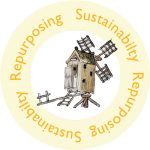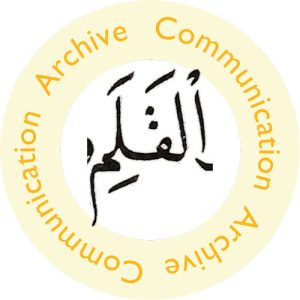Research Axes
Axis-Based Research at the CMRS Center for Early Global Studies
 UCLA’s CMRS Center for Early Global Studies promotes and sustains transdisciplinary studies of the periods from late antiquity to the early modern era across the globe. Five main research axes structure the polyvalent and multi-faceted inquiry of the Center’s diverse faculty. These axes should be understood as generative, not reductive. All research axes remain open to the widest variety of historical and methodological approaches. Proposals that fit more than one axis or offer new frameworks are equally welcome.
UCLA’s CMRS Center for Early Global Studies promotes and sustains transdisciplinary studies of the periods from late antiquity to the early modern era across the globe. Five main research axes structure the polyvalent and multi-faceted inquiry of the Center’s diverse faculty. These axes should be understood as generative, not reductive. All research axes remain open to the widest variety of historical and methodological approaches. Proposals that fit more than one axis or offer new frameworks are equally welcome.
Sustainability/Repurposing
 This axis traverses work that addresses the use, misuse, and re-use in and of the medieval and early modern world, from ideas and goods to texts, objects and images. Topics may include ecologically-informed criticism, interrogations of under- and over-consumption and (re)production across environmental, economic, political, literary, scientific and artistic frameworks, but also medievalisms.
This axis traverses work that addresses the use, misuse, and re-use in and of the medieval and early modern world, from ideas and goods to texts, objects and images. Topics may include ecologically-informed criticism, interrogations of under- and over-consumption and (re)production across environmental, economic, political, literary, scientific and artistic frameworks, but also medievalisms.
Fluidity/Permanence
 The fluidity/permanence axis gathers scholarship engaged with materiality and technologies, from sea to city, from buildings to monuments, from remains to relics, from raw materials to goods, from labor to product, from cognition to the written word and image. Urban, maritime, intellectual, political, and social history, for example, are all part of this axis, as they articulate and negotiate their own stability and periodicity.
The fluidity/permanence axis gathers scholarship engaged with materiality and technologies, from sea to city, from buildings to monuments, from remains to relics, from raw materials to goods, from labor to product, from cognition to the written word and image. Urban, maritime, intellectual, political, and social history, for example, are all part of this axis, as they articulate and negotiate their own stability and periodicity.
Bodies/Performance
 Questions of intersectionality are central to medieval and early modern identity. This axis convenes scholarship that addresses issues of class, race, ethnicity, disability, and sexuality across pre- and early modern spaces. Work on orality, theater, dance, music, sound studies, and also the medical humanities and built environments, is fundamental to this axis.
Questions of intersectionality are central to medieval and early modern identity. This axis convenes scholarship that addresses issues of class, race, ethnicity, disability, and sexuality across pre- and early modern spaces. Work on orality, theater, dance, music, sound studies, and also the medical humanities and built environments, is fundamental to this axis.
Conversion/Mobility
 The medieval and Renaissance worlds were rarely static, and the crossing of imaginative and physical borders is a cornerstone of contemporary scholarship on the past. This axis includes research within and across geographical spaces (nations, regions, areas), across faiths and languages, across economies and laws, as people, things, techniques, texts, and ideas travel and change.
The medieval and Renaissance worlds were rarely static, and the crossing of imaginative and physical borders is a cornerstone of contemporary scholarship on the past. This axis includes research within and across geographical spaces (nations, regions, areas), across faiths and languages, across economies and laws, as people, things, techniques, texts, and ideas travel and change.
Communication/Archive
 The archive, the foundation of medieval and Renaissance studies and a veritable technology of memory, is often an argument for a particular view of the past. Language itself is an archive. Early printed books, manuscripts, documents, libraries, and mnemotechnics can also offer space for visions of the future of our disciplines. The archive, whether digital or analog, can elicit an archeology of the long-standing structures that have shaped our scholarship, explicitly and implicitly, and the ways those structures facilitate or preclude communication.
The archive, the foundation of medieval and Renaissance studies and a veritable technology of memory, is often an argument for a particular view of the past. Language itself is an archive. Early printed books, manuscripts, documents, libraries, and mnemotechnics can also offer space for visions of the future of our disciplines. The archive, whether digital or analog, can elicit an archeology of the long-standing structures that have shaped our scholarship, explicitly and implicitly, and the ways those structures facilitate or preclude communication.

